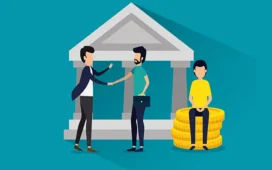In the intricate web of global financial markets, few factors hold as much sway as interest rates. These rates, determined by central banks and influenced by economic conditions, have a profound impact on various sectors of the economy. One such area that feels the direct and lasting consequences of fluctuating interest rates is the realm of mortgages and investments. As interest rates rise, a cascade of effects reverberates through the housing and investment markets, touching everyone from homebuyers to seasoned investors. In this blog post, we delve into the implications of rising interest rates on mortgages and investments, examining both the challenges and opportunities they present.
The Interconnectedness of Interest Rates and Financial Markets
Before we explore the specific impacts, it’s essential to understand the intricate interplay between interest rates and the broader financial landscape. Central banks, such as the Federal Reserve in the United States, control short-term interest rates to manage economic growth, inflation, and unemployment. When the economy is sluggish, central banks may lower interest rates to encourage borrowing, spending, and investment. Conversely, during times of robust economic activity, interest rates may be raised to prevent excessive inflation.
1. The Mortgage Market: Impact of Rising Interest Rates
The most immediate and palpable effect of rising interest rates is felt in the housing market, particularly in the realm of mortgages. As interest rates climb, the cost of borrowing increases, resulting in several notable consequences as summarized below.
1.1 Affordability Strain
Higher interest rates lead to higher monthly mortgage payments for homebuyers. This can potentially put homeownership out of reach for some prospective buyers, thereby dampening demand for real estate. As demand softens, housing prices may stabilize or even decline, impacting homeowners looking to sell.
As an example of how rising interest rates impact mortgage costs consider a mortgage of $500,000 at a rate of 3.5% over 30 years. A breakdown of your costs would be:

We’ve used TheCalculatorKing.com to calculate the mortgage repayment values above and below. If the interest rate increased by 1% to 4.5% your repayment details would be:

The 1% increase in interest rates has translated into:
- +$266.43 per month
- +$3,197.16 per year
- +$103,753.12 over the lifetime of the mortgage
1.2 Refinancing Dilemma
Existing homeowners who had previously secured mortgages at lower rates might find themselves in a quandary. The appeal of refinancing to reduce monthly payments diminishes, limiting the potential for saving money through this avenue. This, in turn, can affect consumer spending patterns, which are often influenced by available disposable income.
1.3 Slowdown in Construction
The housing market is deeply connected to the construction industry. A decrease in demand for housing due to higher mortgage rates could lead to a slowdown in new construction projects, affecting not only the housing market but also related industries such as construction materials, labor, and real estate services.
2. The Investment Landscape: Navigating Opportunities and Risks
While the immediate impact of rising interest rates on mortgages is clear, the investment landscape also undergoes substantial transformations as rates climb:
2.1 Bond Market Volatility
Bonds, often considered a stable investment option, are closely tied to interest rates. As rates rise, the fixed yields offered by existing bonds become less attractive in comparison to newly issued bonds with higher coupon rates. Consequently, the value of existing bonds may decrease, resulting in potential losses for bondholders.
2.2 Equities and Corporate Borrowing
Rising interest rates can affect equity markets in nuanced ways. While higher rates might lead to increased borrowing costs for companies, they can also signal a healthy and growing economy. Savvy investors must weigh these factors and consider sector-specific implications when making investment decisions.
2.3 Opportunities in Alternative Investments
Alternative investments such as real estate investment trusts (REITs), commodities, and private equity can present unique opportunities amid rising interest rates. For instance, REITs can benefit from increased rental income as landlords adjust lease rates to match higher borrowing costs. Similarly, commodities can serve as a hedge against inflation, gaining value as prices rise.
In Summary
The influence of rising interest rates on mortgages and investments is undeniable. As central banks react to economic shifts by adjusting rates, a domino effect ripples through various sectors. The housing market grapples with affordability challenges and shifts in demand, while investors navigate a complex landscape where traditional investment vehicles react to changing yields. Amid the challenges, opportunities also emerge, underscoring the importance of adaptability and informed decision-making.
For individuals, proactive financial planning becomes paramount during periods of rising interest rates. Homebuyers should carefully assess their financial readiness before entering the real estate market while existing homeowners must consider the implications of refinancing decisions. Investors should diversify their portfolios and stay informed about sector-specific impacts, aiming to capitalize on potential opportunities that arise amidst market shifts.
Ultimately, understanding the intricate dance between interest rates, mortgages, and investments empower individuals to make informed choices that align with their financial goals and adapt to the dynamic nature of the global economy.









